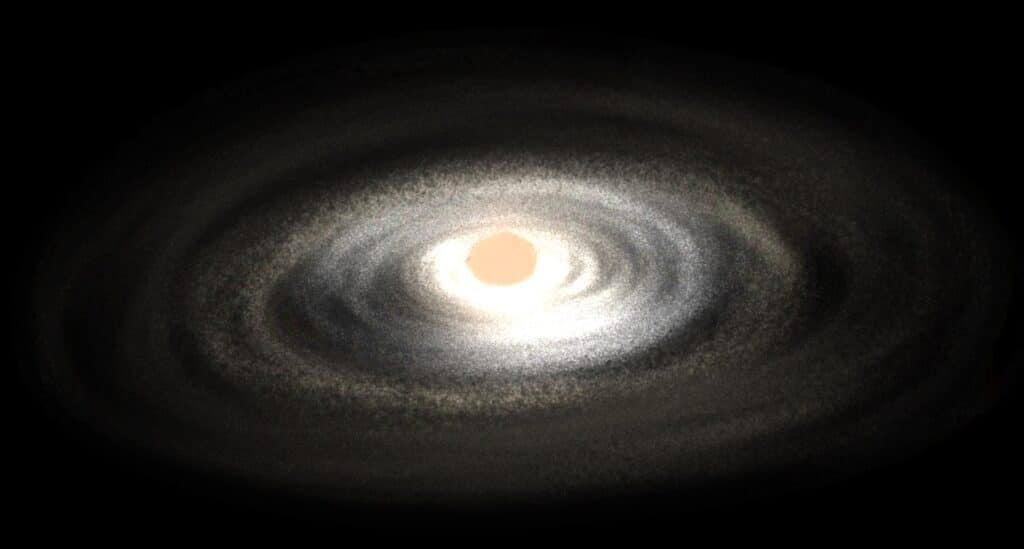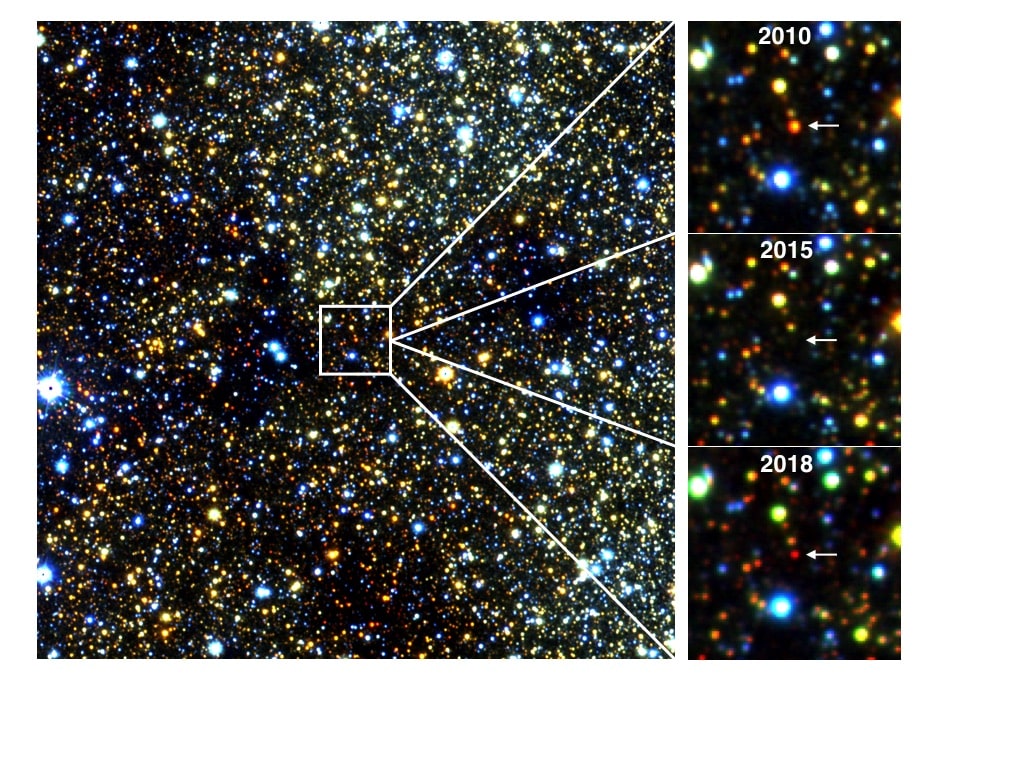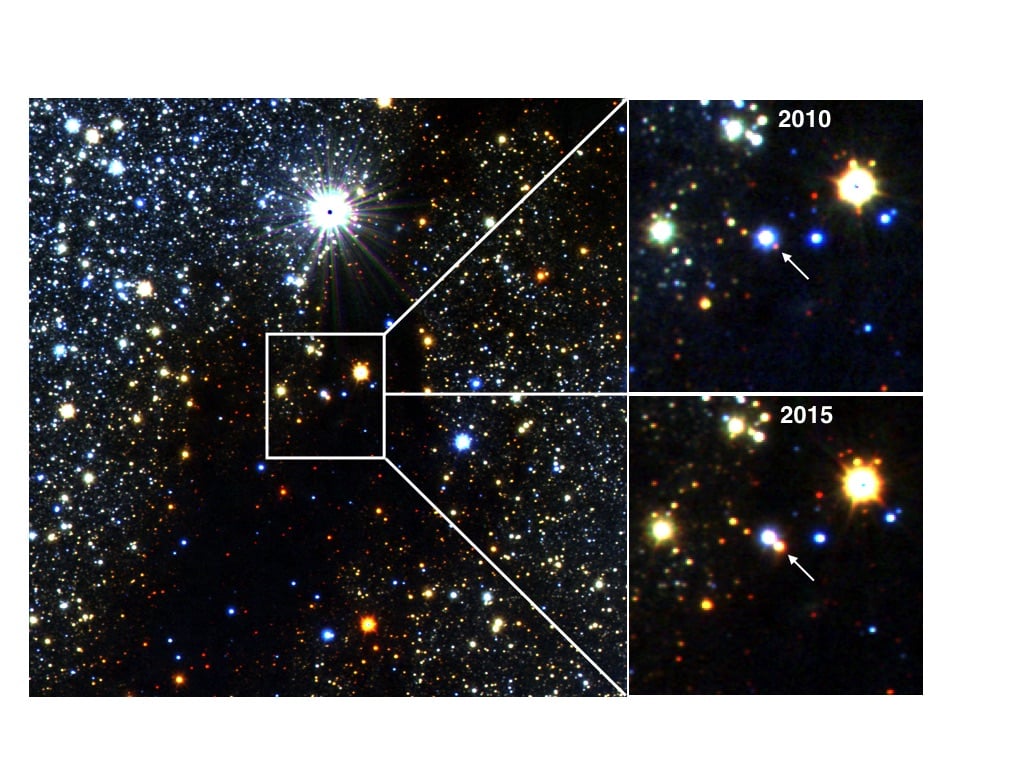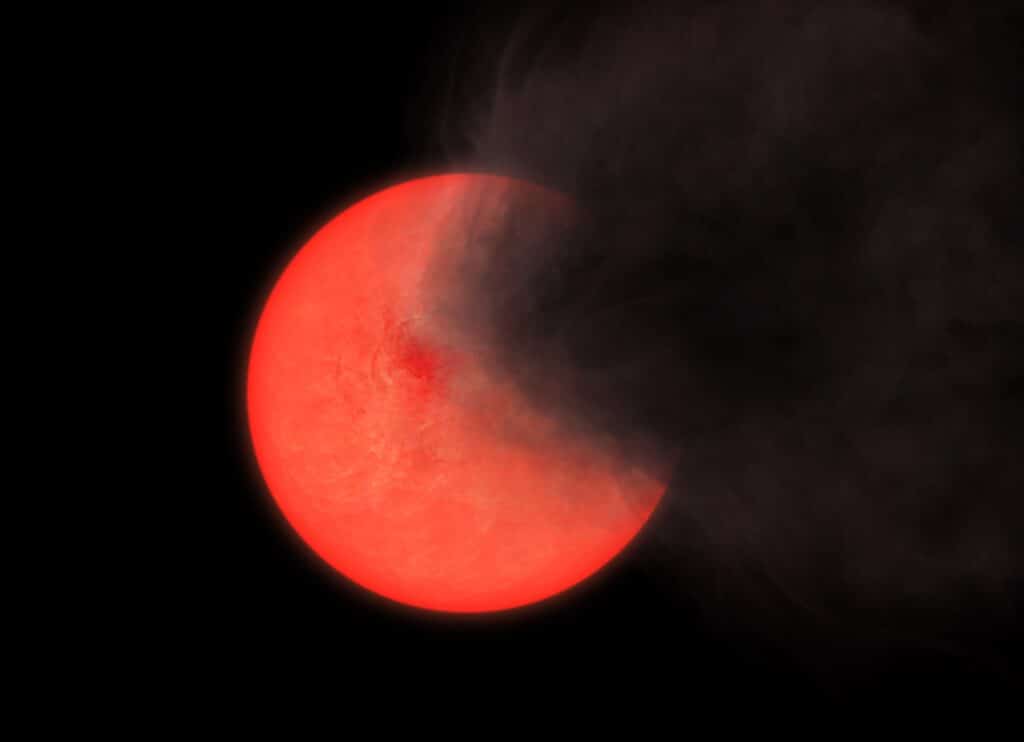Stars that were “hiding” from astronomers have now been discovered in the heart of our Milky Way galaxy. Scientists from the Royal Astronomical Society have unveiled the existence of unique celestial phenomena, including a new type of red giant star, nicknamed “old smokers,” and rarely-seen erupting protostars.
The “old smoker” stars and protostars, previously hidden to the human eye, were detected using infrared light, which unlike visible light, penetrates through the dense dust and gas of the Milky Way. The discovery emerged from a decade-long survey involving nearly a billion stars.

The “old smoker” stars were among the most striking finds. These elderly stars sit quietly for years or decades and then puff out clouds of smoke in a totally unexpected way. This unpredictable behavior, coupled with their tendency to appear extremely dim or even invisible, makes these stars a captivating subject for future study.
“About two-thirds of the stars were easy to classify as well-understood events of various types,” says study author Philip Lucas, professor at the University of Hertfordshire, in a media release. “The rest were a bit more difficult so we used ESO’s Very Large Telescope to get spectra of many of them individually. A spectrum shows us how much light we can see at a spread of different wavelengths, giving a much clearer idea of what we are looking at.”
Found primarily in the Milky Way’s Nuclear Disc, a region abundant in heavy elements, these stars have sparked intrigue among astronomers regarding their unique characteristics and the mysterious process leading to their smoke-like ejections.

In addition to the “old smokers,” the team uncovered 32 protostars experiencing dramatic increases in brightness. Protostars are young stars in the early stages of formation.
“Our main aim was to find rarely-seen newborn stars, also called protostars, while they are undergoing a great outburst that can last for months, years, or even decades,” explains Dr. Zhen Guo, formerly of the University of Hertfordshire and now based at the University of Valparaiso in Chile. “These outbursts happen in the slowly spinning disc of matter that is forming a new solar system. They help the newborn star in the middle to grow, but make it harder for planets to form.
“We don’t yet understand why the discs become unstable like this.”
The success of this research is attributed to the use of infrared astronomy, particularly the Visible and Infrared Survey Telescope (VISTA) located at Cerro Paranal Observatory in the Chilean Andes. Infrared light’s ability to penetrate dust and gas clouds allowed astronomers to observe stars that are otherwise obscured in visible light. The team, comprising astronomers from the UK, Chile, South Korea, Brazil, Germany, and Italy, meticulously analyzed 222 stars showing significant brightness variations.
“Matter ejected from old stars plays a key role in the life cycle of the elements, helping to form the next generation of stars and planets,” notes Lucas. “This was thought to occur mainly in a well-studied type of star called a Mira variable.
“However, the discovery of a new type of star that throws off matter could have wider significance for the spread of heavy elements in the Nuclear Disc and metal-rich regions of other galaxies.”

As the study of these “old smoker” stars and erupting protostars continues, astronomers anticipate unraveling more mysteries about the life cycle of stars and the formation of solar systems. These findings not only enrich our comprehension of the cosmos but also underscore the importance of infrared astronomy in uncovering the secrets of the universe.
The study is published in the journal Monthly Notices of the Royal Astronomical Society.













Comments